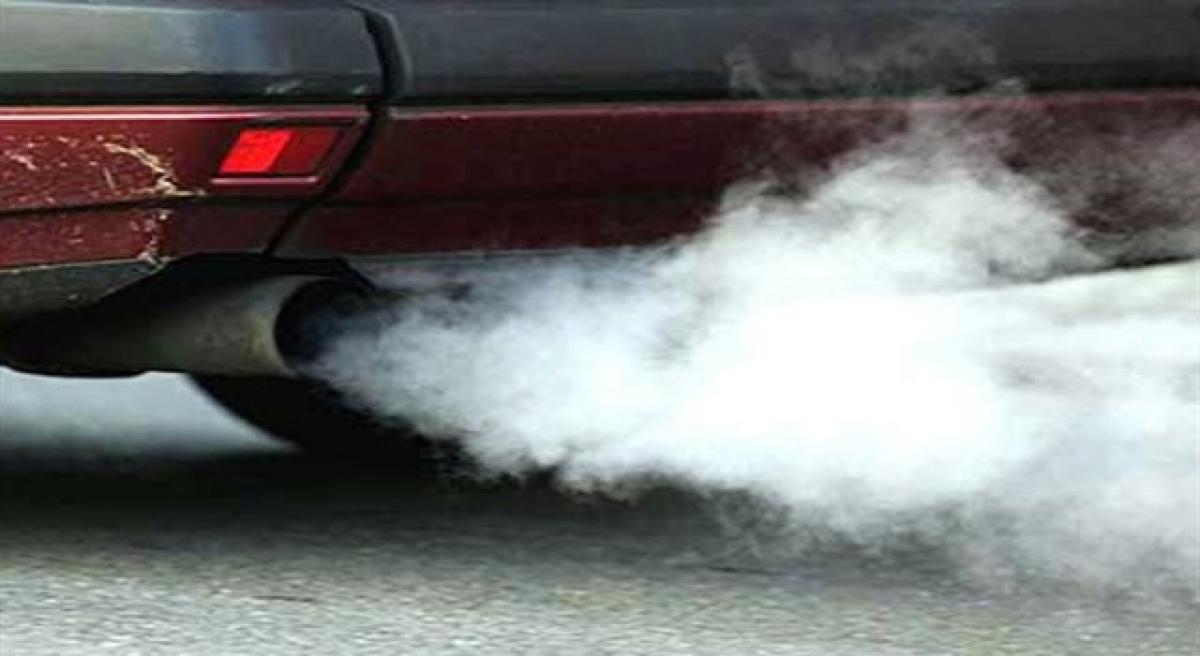Live
- ‘Get Set, Grow Summit 2024’ Focuses on Digital Detox for Families
- Stokes motivates his team to put in extra effort, says England pacer Potts
- From overcoming setbacks to leading India in U19 Women’s Asia Cup, Niki Prasad's amazing journey
- Driving Enterprise Security: Inside Venkata Reddy Thummala’s Leadership Journey
- Constitution debate: PM Modi hails 'Nari Shakti'; makes strong pitch for 'United Bharat’
- Abhijeet Bhardwaj: Revolutionizing Enterprise Analytics with Innovation and Expertise
- Bihar: Inquiry initiated against principal who went to buy veggies during school hours
- Press Sri Lankan Prez for release of Indian fishermen: TN Cong MP to EAM Jaishankar
- TN: DMK postpones executive meet due to heavy rains & Parliament session
- Porous silicon oxide electrodes can fix durability issues in batteries: Researchers
Just In

The much discussed and debated Goods and Services Tax (GST) may hold an unpleasant surprise within its folds, Centre for Science and Environment (CSE) warned here today.
The much discussed and debated Goods and Services Tax (GST) may hold an unpleasant surprise within its folds, Centre for Science and Environment (CSE) warned here today. A careful analysis of the proposed rates of GST shows that the tax regime will make the SUV segment which is already the fastest growing vehicle segment substantially cheaper and affordable.
“This will encourage these huge energy-guzzling engines and add to the public health risk that we already facing from toxic diesel emissions. We believe the GST has not adequately integrated the polluter-pays principle and the principle of using fiscal instruments to discourage polluting technology and fuels,” said Sunita Narain, director general, CSE.
The existing pre-GST tax structure for automobiles was designed to take into account these inefficiencies of the SUV by taxing it at a higher rate 47.5-54.5 per cent across various states. While the GST tax rates take into account this rationale and levy taxes on SUVs at the highest slab 43 per cent, inclusive of a compensation cess -- this figure represents a significant reduction of 4.5-11.5 per cent from the pre-GST tax rate.
Said Anumita Roychowdhury, executive director-research and advocacy, CSE: “Such a significant reduction in the tax represents a massive incentive for sale of such vehicles. For example, the Mahindra Scorpio model that costs Rs 9.3-15.51 lakh under the pre-GST regime, will cost Rs 8.56-14.27 lakh under GST – this represents a price reduction of about Rs 74,000 to Rs 1,24,000.
This will have serious consequences in terms of motorisation and dieselisation as there is no proposal to equalise the price of petrol and diesel fuel.” CSE has suggested that in view of the serious air pollution, public health and civic congestion implications, it is necessary that the Government of India while finalising the GST rate, takes steps to restrict the further growth of SUVs.
Said Narain: “We strongly recommend that the Union ministry of finance should urgently impose a strong and effective disincentive for SUVs in the form of a Sin Tax, which will restore the effective tax rate to pre-GST rates.”
What matters most from the standpoint of environmentally responsible fiscal regime is the high sin / demerit tax and the rates worked out in the public interest. The recommendations of the Arvind Subramanian Committee Report on the Revenue Neutral Rate and Structure of Rates for GST had proposed fiscal restraints on polluting goods and services within the GST framework.
This report had recognised that “there is a growing international practice to levy sin / demerit rates in the form of excise outside the scope of GST on goods and services that create negative externality for the economy. These include carbon taxes, taxes on cars that create environmental pollution, taxes to address health concerns etc.”
The current proposal to have the highest tax bracket for SUVs is narrow in scope and is actually a tax on luxuries, says CSE. This is not effectively linked to offset the pollution and health impacts of motorisation.
Therefore, the principle of incentive and disincentive has to be on the table.
The environment and development discourse has already exposed severe market distortions that make India vulnerable to high levels of pollution and energy-guzzling. The Supreme Court has already put a red flag on the public heath impact of increased use of dirty diesel in the transport sector, especially in cars, and has imposed a 1 per cent environment pollution charge on big diesel cars sold in Delhi-NCR. In fact, this has helped create a dedicated fund now available for pollution control.
Roychowdhury pointed out: “This will have to be addressed within the GST framework. Industry should not end up using the argument of harmonised taxes to stop fiscal action on polluting goods.” Said Narain: “Clearly, while fast tracking reforms, the government cannot ignore fiscal measures that can be more cost-effective than command-and-control strategies to induce change and sway consumer choices towards cleaner options. The markets must work for the cleaning up job too.”

© 2024 Hyderabad Media House Limited/The Hans India. All rights reserved. Powered by hocalwire.com







